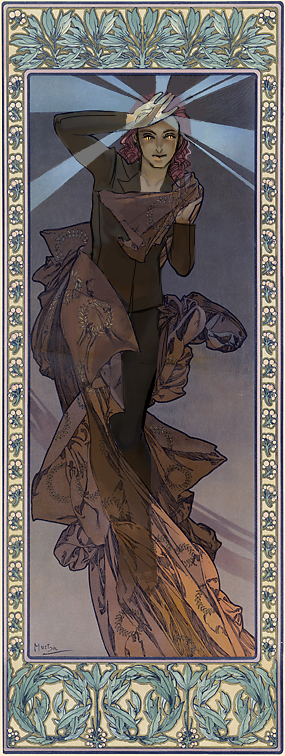

It appeared in graphic arts in the posters of Alphonse Mucha, and the glassware of René Lalique and Émile Gallé.įrom Belgium and France, Art Nouveau spread to the rest of Europe, taking on different names and characteristics in each country (see Naming section below). It reached its peak at the 1900 Paris International Exposition, which introduced the Art Nouveau work of artists such as Louis Tiffany.

It moved quickly to Paris, where it was adapted by Hector Guimard, who saw Horta's work in Brussels and applied the style for the entrances of the new Paris Métro. The first Art Nouveau houses and interior decoration appeared in Brussels in the 1890s, in the architecture and interior design of houses designed by Paul Hankar, Henry van de Velde, and especially Victor Horta, whose Hôtel Tassel was completed in 1893. German architects and designers sought a spiritually uplifting Gesamtkunstwerk ("total work of art") that would unify the architecture, furnishings, and art in the interior in a common style, to uplift and inspire the residents. In Britain, it was influenced by William Morris and the Arts and Crafts movement. The style responded to leading 19-century theoreticians, such as French architect Eugène-Emmanuel Viollet-le-Duc (1814–1879) and British art critic John Ruskin (1819–1900). It was most widely used in interior design, graphic arts, furniture, glass art, textiles, ceramics, jewellery and metal work. One major objective of Art Nouveau was to break down the traditional distinction between fine arts (especially painting and sculpture) and applied arts. Other characteristics of Art Nouveau were a sense of dynamism and movement, often given by asymmetry or whiplash lines, and the use of modern materials, particularly iron, glass, ceramics and later concrete, to create unusual forms and larger open spaces. It was often inspired by natural forms such as the sinuous curves of plants and flowers.


It was popular between 18 during the Belle Époque period, and was a reaction against the academic art, eclecticism and historicism of 19th century architecture and decoration. The style is known by different names in different languages: Jugendstil in German, Stile Liberty in Italian, Modernisme in Catalan, and also known as the Modern Style in English. Clockwise from top left: Paris Métro station Abbesses, by Hector Guimard (1900) Lithograph by Alphonse Mucha (1898) Wall cabinet by Louis Majorelle Interior of the Hôtel Tassel in Brussels, by Victor Horta (1892–1893) Lamp by Louis Comfort Tiffany (1900–1910).Īrt Nouveau ( / ˌ ɑː r t n uː ˈ v oʊ, ˌ ɑː r/ French: ) is an international style of art, architecture, and applied art, especially the decorative arts.


 0 kommentar(er)
0 kommentar(er)
